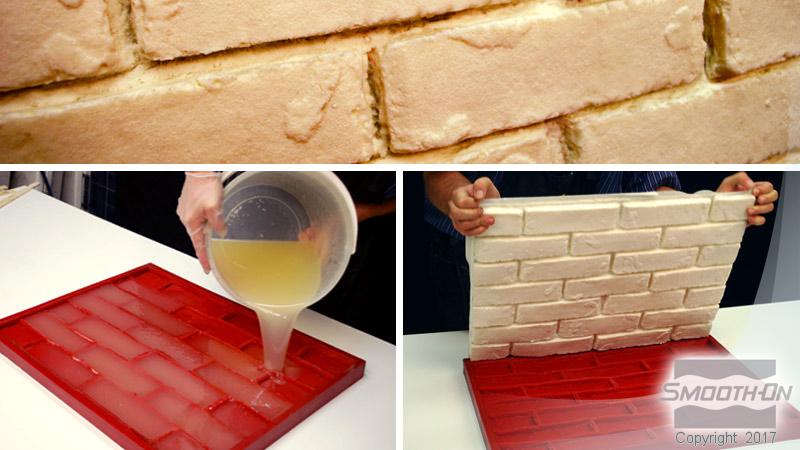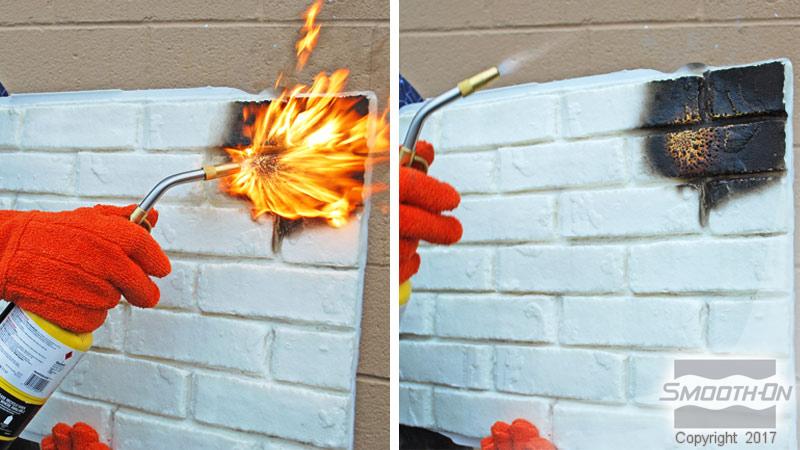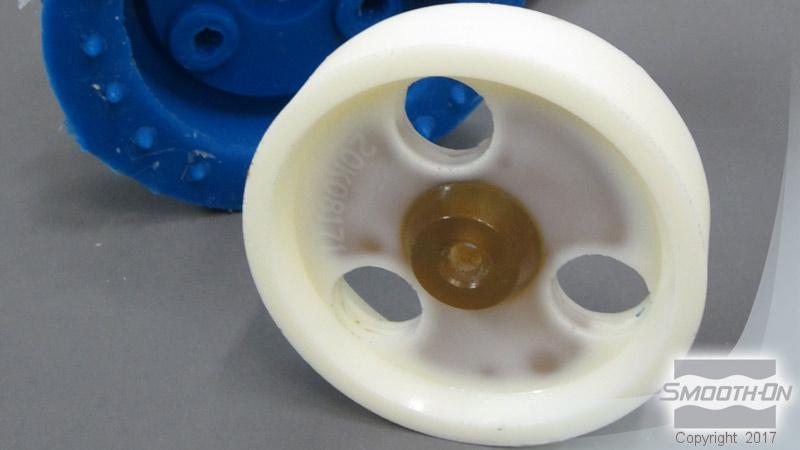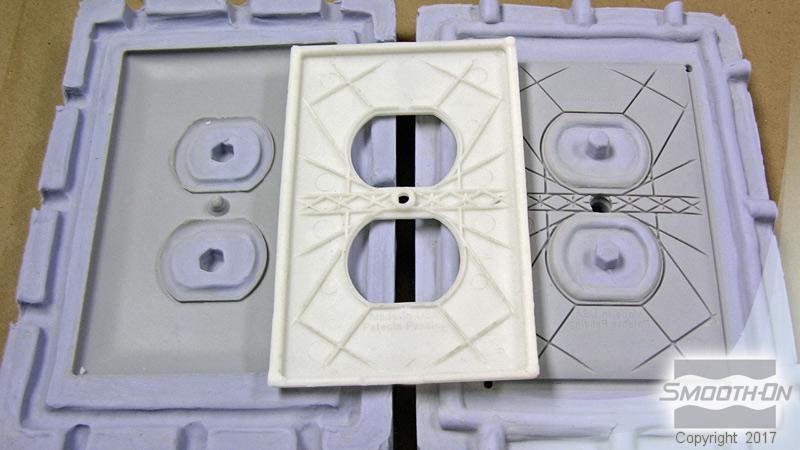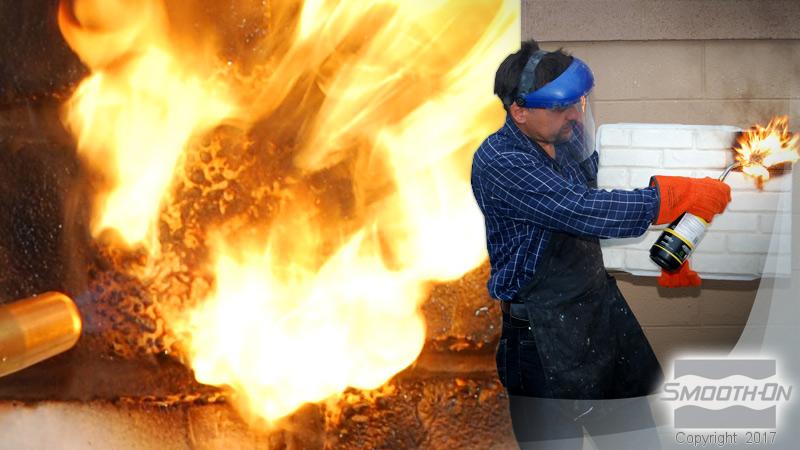TASK™ 7
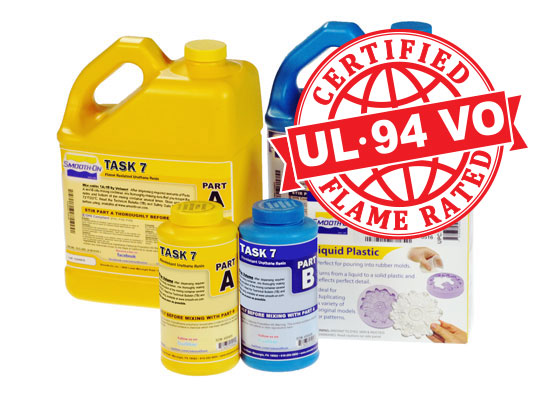
完全固化的Flame Out™坚韧、耐用、可加工和可涂漆。它具有比其他任何阻燃等级的聚氨酯更高的物理性能和应用性能。通过添加SO-Strong™颜色,可以获得鲜艳的色彩效果。FlameOut™的应用包括制作耐火原型和建筑模型、模型玩具、主题公园和舞台元素、耐用微缩和特殊效果道具。材料也可用于灌封和封装应用。
说明
Because no two applications are the same, a small test application to determine suitability for your project is recommended if performance of this material is in question.
Applying A Release Agent - A release agent is necessary to facilitate demolding when casting into or over most surfaces. Use a release agent made specifically for mold making (Universal™ Mold Release or Mann’s Ease Release™ 200 available from Smooth-On or your Smooth-On distributor). A liberal coat of release agent should be applied onto all surfaces that will contact the plastic
IMPORTANT: To ensure thorough coverage, apply release and brush with a soft brush over all surfaces. Follow with a light mist coating and let the release agent dry for 30 minutes.
Smooth-On silicone rubber molds usually do not require a release agent when casting urethane resin into the mold. Applying a release agent will prolong the life of the mold.
Pre-mix Part A and Part B before dispensing.
Measuring - The proper mixing ratio of Flame Out™ is 1 Part A to 1 Part B by volume. Dispense equal amounts into a mixing container.
If tinting or pigmenting Flame Out™, add color to Part B and mix thoroughly before adding Part. A.
Mixing - Stir deliberately making sure that you scrape the sides and bottom of the mixing container several times. Be careful not to splash low viscosity material out of container.
IMPORTANT: Shelf life of product is reduced after opening. Remaining product should be used as soon as possible. Immediately replacing the lids on both containers after dispensing product will help prolong the shelf life of the unused product. XTEND-IT™ Dry Gas Blanket (available from Smooth-On) will significantly prolong the shelf life of unused liquid urethane products.
Pouring - If casting Flame Out™ into a rubber mold, pour mixture in a single spot at the lowest point of the mold. If encapsulating an object, do not pour the mixture directly over the object.
Let the mixture seek its level. A uniform flow will help minimize entrapped air.
For Best Results . . . Best results are obtained using a pressure casting technique. After pouring the mixed compound, the entire casting assembly (mold, dam structure, etc.) is placed in a pressure chamber and subjected to 60 PSI (4.2 kg/cm2) air pressure for 1 hour.
Curing - Important: Use this product with at least room size ventilation or in proximity to a forced outlet air vent and do not inhale/breath fumes. Fumes, which may be visible with a significant mass concentration, will quickly dissipate with adequate ventilation. Castings with significant mass may be hot to the touch and irritate skin immediately following cure. Let casting cool to room temperature before handling.
Demold time of the finished casting depends on mass and mold configuration. Low mass or thin-walled castings will take longer to cure than castings with higher mass concentration.
If making rotational or hollow castings, backfilling with a rigid foam (Foam-iT! 5 or other) will provide lightweight reinforcement. Foam backfilling is recommended if castings will be subjected to temperatures above 85°F / 30°C.
Post Curing - Post curing is recommended if castings are thin or of low mass concentration. Castings should be post cured in a mold or support structure. Allow the material to cure for 1 hour at room temperature followed by 2 hours at 150 - 160°F (65 - 72°C). The casting or part should be allowed to cool to room temperature before handling.
Performance - Cured castings of Flame Out™ are rigid and durable. They resist moisture, moderate heat, solvents, dilute acids and can be machined, primed/painted or bonded to other surfaces (any release agent must be removed). Castings can be displayed outdoors after priming and painting.
